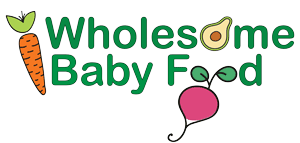Apples For Baby – Feeding Baby Apples and Making Apples For Baby Food
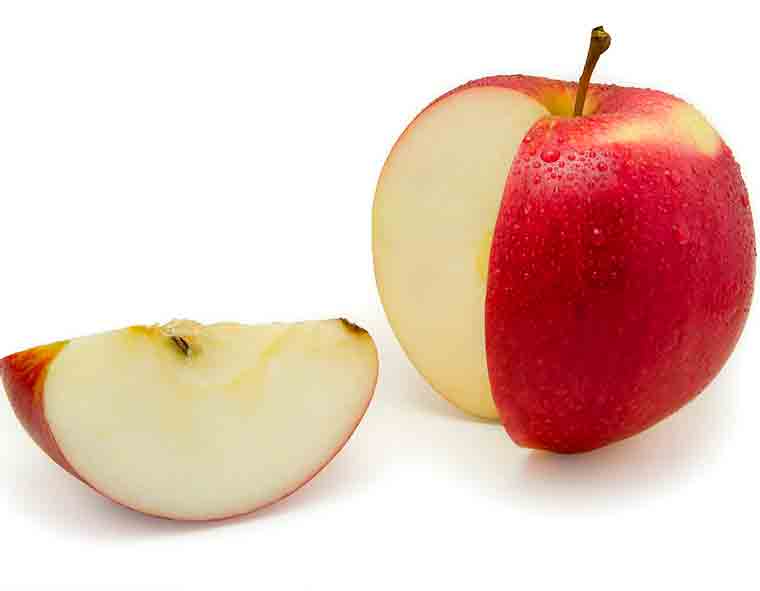
Apples are a great choice for one of an infant’s first food. They are easy to prepare, easy to digest and are full of nutrients. Apples are also very versatile and may be added to almost any baby recipe you find.
You can mix apples with cereals, veggie purees, with meat purees and use them in teething biscuit recipes, in healthy cake recipes, in yogurt and mixed with other fruits also.
When Can Babies Eat Apples? When To Introduce Apples to Babies
Apples are a really good fruit to offer babies as they begin to eat solid foods. Babies may eat apples as early as 4 months old although the current recommendations for starting babies on solid foods is 6 months old.
Like avocados, apples mix well with almost any food you can think of. Try pureeing apples with avocado or sweet potatoes or even peaches and yogurt.
Are Apples Good For Babies To Eat? What Are The Health and Nutritional Benefits of Apples?
Apples are a really good fruit to offer babies as they begin to eat solid foods.
Apples have two types of fiber; insoluble fiber and soluble fiber. Both types of help maintain bowel regularity. The insoluble fiber works like roughage, while the soluble fiber (pectin), helps keep the bowels regular (avoiding constipation, avoiding diarrhea) and specifically affects the makeup of the stool. Pectin will firm up the stool as it is a soluble fiber
| Nutrients in Apples (one medium apple) | |
| VITAMINS: Vitamin A – 73 IU Vitamin C – 9 mg Folate (important during pregnancy) – 4 mcg Vitamin E – .66 IU | MINERALS: Potassium – 158 mg Calcium – 9.5 mg Phosphorus – 9.5 mg Magnesium – 7 mg Selenium – .4 mg Also contains small amounts of iron, manganese, copper and zinc. |
Do Apples Have To Be Peeled For Babies To Eat Them?
You should peel apples when offering them to babies under 8 months of age. Apple skins could cause tummy upsets and may not be completely pureed. Babies should do fine with apples cooked and prepared with peels/skins after 8 months of age. Of course there are many babies who do fine with apples that have the skin on so please use your own judgement. This applies for apples that you will be cooking and mashing/pureeing.
Always peel apples that you will be serving raw as finger foods until you feel your toddler is able to handle the peels.
What Is The Best Way To Cook or Prepare Apples For Babies?
Baking is the best way to prepare apples for baby food! Apples are incredibly flavorful and tasty when they are baked. Steaming apples is also a good way to cook apples to help retain the most of their nutrients. You can also boiling apples in a small amount of water.
Apples are very juicy and when you steam or boil apples, they will seem to “boil down” to almost a juicy like sauce. This is great because you will probably not need to add any water to make baby’s applesauce. Add some spices as the apples are cooking for extra deliciousness!
Apple Baby Food Recipes
Baby's First Applesauce Puree
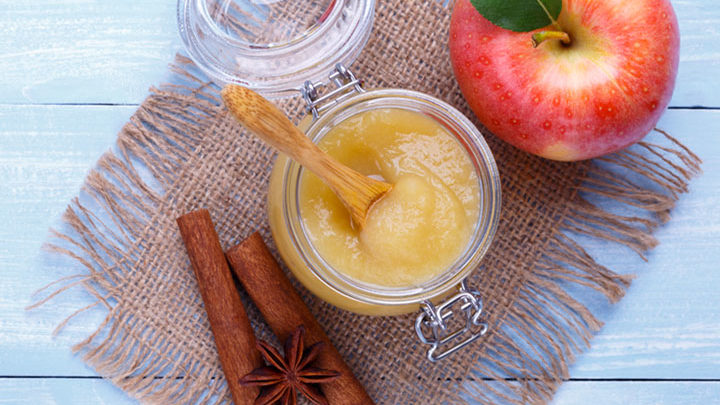
Simple but delicious Baby's First Applesauce Puree
Recommended Age and Stage: 4-6 months+ | Stage One | First Foods and Beyond |
Ingredients
- 4 Macintosh or Braeburn Apples
- 1/2 cup water
Instructions
- Wash and peel the apples and then core and seed the apples
- Chop the apples into small uniform pieces or use an apple divider
- Add apples and water to a medium sized sauce pan
- Bring apples and water to boil and then reduce heat to simmer
- Simmer for 10 minutes or until apples become soft and mushy
- Once apples are cooked, remove from heat and allow to cool; do not drain.
- Reserve some of the cooking water to use to puree the apples
Notes
To Puree the Apples:
Add cooled apples to a food processor or blender, begin to puree using pulses.
Add reserved cooking water to thin the baby applesauce puree as needed.
Once pureed, add applesauce to 1 ounce containers and save in the refrigerator for up to 3 days. Divide the remainder of the applesauce into ice cube trays or freeze safen storage containers.
Slow Cooker Applesauce
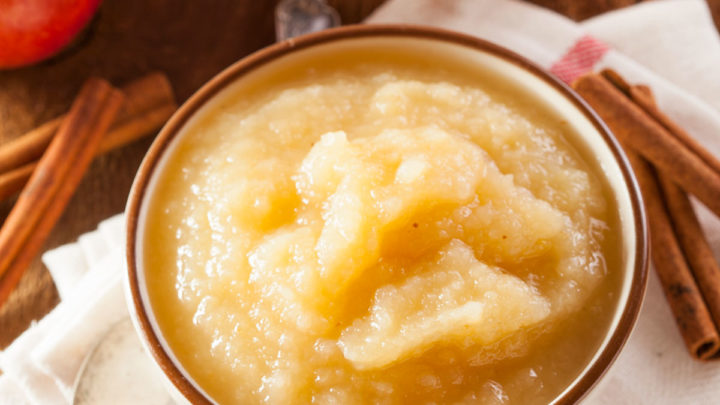
Recommended Age and Stage: 6 months+ | Stage One | First Foods and Beyond | 4 to 6 hours cooking
This slow cooker applesauce recipe is delicious anytime of the year. Once the Fall begins to creep in and the apple orchards have apples ready to pick, you know it’s time to begin making all things apple.
Ingredients
- 6 pounds of apples – try a mix of Macintosh and Fuji or just Macintosh
- 1 cup of water
- 1 cinnamon stick or 2 teaspoons powdered cinnamon
- 1 tsp of vanilla
- pinch of nutmeg, ginger and/or allspice (optional)
Instructions
- Wash, peel and core the apples
- Chop apples roughly or use an apple slicer
- Add apples to a 5qt crockpot/slow cooker
- Add spices then pour water over apples – stir to combine
- Cover, set heat to low and simmer away for up to 8 hours!
- Check this every hour or so and give it a stir. It will be done when it is at the texture you like; it can be chunky or really thin.
Notes
❄ Store in fridge for 3 days for baby but you can stretch to 6 days for older folks with stronger tummies! Freezes well in quart freezer bags!
Apples & Pumpkin Puree Baby Food Recipe
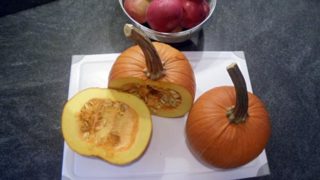
Tools - Saucepot Knife, Cutting Board, Food Processor
Ingredients
- 1 cup fresh pumpkin – peeled and diced
- 2 cups apples – peeled cored and chopped
- 1-2 cups of water
- pinch of cinnamon
Instructions
- Combine all the ingredients in a medium saucepan.*
- Bring ingredients to a gentle simmer and continue to simmer on low until the fruits are soft and fork tender *Check on water level during simmering time – approximately 25 minutes.
Notes
Allow to the apples and pumpkin to cool then mash or puree if needed.
Slow Cooker Root Veggie Trio with Apples and Fennel
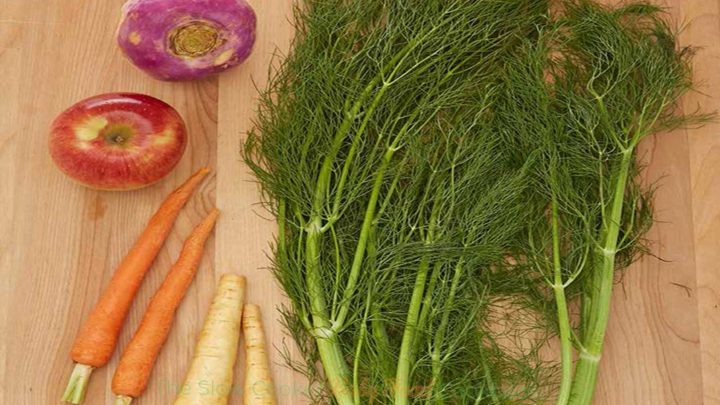
Age and Stage: 8 months+ | Stage Two or Three | Second and Third Foods and Beyond
Ingredients
- 1 pound 455 g carrots
- 1 pound 455 g parsnips
- 1 pound 455 g turnips
- 6 large apples, such as McIntosh
- 1 bulb fennel
- 1/4 cup 60 ml extra-virgin olive oil
- 1 cup 235 ml cold water
Instructions
- Wash all of the vegetables and the apples and fennel. Peel the carrots, parsnips, and turnips. Halve, core, and peel the apples.
- Dice the vegetables and apples into uniform pieces.
- Trim the fennel stalks and cut the bulb in half and then into quarters. Transfer to a covered container and set aside in the refrigerator.
- Transfer the vegetables and apples to the slow cooker. Add the oil and stir to combine.
- Cover and cook on low for 6 hours or on high for 4 hours. After the first hour, add the water.
- Check again after 3 hours and add additional water if needed. When 30 minutes of cooking time remain, add the fennel and stir. The root vegetables will simmer down nicely, but not so much that they are a watery mess. Remove the food from the slow cooker and set aside to cool.
Notes
Preparation and Storage for Baby:
When cooled, puree the food in batches. Use a food processor to achieve a smooth texture and add water, formula, or breast milk as you continue to puree. You can also partially puree so that the food has some lumps and bumps to help baby make the transition to table foods.
When possible, keep some of the vegetables in their soft, chunky form so that baby can enjoy some self-feeding. Store in the refrigerator for up to 3 days for babies and 3 to 6 months in the freezer.
For the Family:
Serve this recipe as a delicious side dish. Prior to reducing to a texture suitable for your baby, remove some of the veggies and apples and set aside. Add these reserved portions to salads or reduce to a soup.
